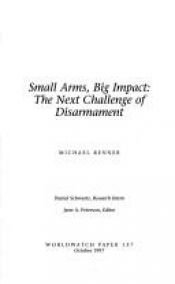Small arms, big impact : the next challenge of disarmament
Blurb
Arms that can be carried by an individual have become so commonplace that they have encouraged habitual recourse to violence, thus threatening the cohesion and well-being of many societies. These low-tech, inexpensive, sturdy, and easy-to-use weapons-numbering hundreds of millions-cause as much as 90 percent of the deaths in contemporary conflicts.Unrestrained production of tens of millions of small arms annually means that arsenals continue to swell. And because small arms are long-lived, they may stay in circulation for decades. Indeed, trade in secondhand arms flourishes, fed by excess equipment from Cold War antagonists and by weapons left over at the end of civil wars.
During the Cold War, arms control and disarmament efforts focused exclusively on major weapons systems such as tanks, jet fighters, and nuclear weapons. Although this has begun to change in recent years, there are still no international standards regarding small arms; their production, trade, and possession remain essentially unmonitored and unregulated.
In this paper, Michael Renner draws up a balance sheet that weighs the real costs of small arms proliferation and the violence it engenders: the loss of life and property, social instability, the disruption of economic development, and the threat to democratic governance. The author offers a broad range of policy recommendations, but observes that efforts that do not curtail new production are bound to fall short. The longer large-scale production continues, the greater the future supply of weapons whose whereabouts and use will be of great concern.

 English
English Español
Español Deutsch
Deutsch










Member Reviews Write your own review
Be the first person to review
Log in to comment